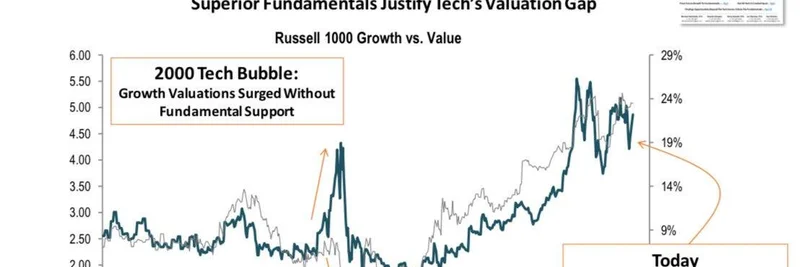In the fast-paced world of crypto and blockchain, market narratives can make or break investments, especially for meme tokens that thrive on hype and community vibes. Today, a thought-provoking discussion caught our eye on X, where crypto investor Kyle from DeFiance Capital chimed in on a post by economist and trader Alex Krüger. Their exchange challenges the popular idea that stocks—and by extension, tech-driven assets like AI projects—are in a bubble reminiscent of the dot-com era.
Krüger, known for his sharp insights on crypto and global markets (@krugermacro), kicked things off with a detailed breakdown. He pointed out that while metrics like the S&P's price-to-book ratio are sky-high, surpassing dot-com peaks, and the Buffett Indicator (which measures market cap against GDP) is at record levels, this isn't necessarily a red flag for an imminent crash. Credit spreads, which indicate how risky investors see corporate debt, are also super tight—meaning low perceived risk.
He recalled the February market dip, attributing it not to overvaluations but to political rhetoric from Trump, who later softened his stance in April. Shifting from austerity to pro-growth policies, Trump now aims to heat up the economy. But the real kicker? Earnings are booming. Krüger argues this isn't a bubble yet; it's a "generational gold rush" in AI, with robotics next on the horizon. He urges folks not to draw lazy parallels to the 2000 dot-com bust, where hype outran real profits.
To illustrate, Krüger shared this chart from Piper Sandler Macro Research, comparing tech valuations in 2000 versus 2025. It shows how today's growth stocks have stronger fundamental backing, like better return on equity (ROE), unlike the unsupported surge back then.
Kyle (@0xkyle__), a thesis-driven investor at DeFiance Capital—a crypto-native firm focused on DeFi, Web3 gaming, and digital assets—fully endorsed this view in his reply (original post). He called it a "very well-written take" and emphasized that true bubbles stem from a "lack of fundamentals." In contrast, strong earnings are powering the current rally, while much of the fear stems from unpredictable macro factors—like geopolitics or policy shifts.
Kyle nailed it with: "we are paid to take (and manage) risk, not avoid it." This mindset is gold for blockchain practitioners, where volatility is the name of the game.
So, what does this mean for meme tokens? Meme coins often get slapped with the "bubble" label because they lack traditional earnings or balance sheets. Instead, their "fundamentals" are community engagement, viral potential, and cultural relevance. Think about AI-themed memes like those buzzing around neural networks or chatbot hype—they could ride the AI gold rush wave if real-world adoption surges.
Similarly, the upcoming robotics gold rush Krüger mentions might spark new meme narratives in blockchain. Projects blending AI, robotics, and decentralized tech (like autonomous agents on-chain) could see meme tokens emerge as fun entry points. But remember, in crypto, macro unknowns—regulations, elections, or global events—amplify risks. Savvy investors manage this by diversifying, staying informed, and not shying away from calculated bets.
This dialogue reminds us: don't let fear-mongering narratives deter you. Whether in stocks or meme tokens, dig into the fundamentals—whatever form they take—and position yourself for the next big rush. For more on meme token strategies and blockchain news, keep it locked on Meme Insider.


